So, you're considering getting your vision corrected but scared of the cut on the cornea? You're not alone! That’s exactly why flapless LASIK procedures like PRK, TransPRK, and SmartSurf are growing fast in popularity. These advanced techniques eliminate the flap-and that changes everything.
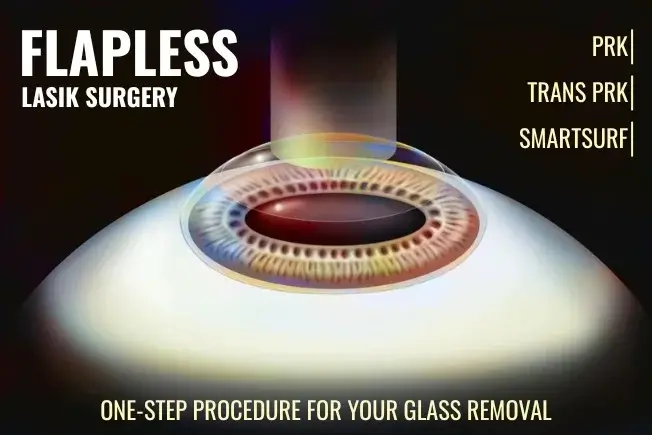
Flapless LASIK refers to laser vision correction methods that do not involve creating a corneal flap, unlike traditional LASIK. Instead of making a cut on the cornea, these procedures work directly on the surface. That’s a huge win for safety, healing, and long-term eye health.

Patients want safer, simpler, and more natural recovery. And with modern no-touch technologies and gentler lasers, flapless procedures are stealing the spotlight for people who want great vision without the added risks. Once the complete healing occurs, it cannot be detected on slit lamp examination.
Traditional LASIK creates a thin flap in the cornea, lifts it, reshapes the tissue beneath, and then reposit the flap back. Flapless LASIK skips the whole flap part and directly reshapes the eye cornea.
In LASIK, the flap helps access deeper layers but comes with risks —like flap dislocation, inflammation, or infection. Plus, if you rub your eyes hard post-surgery, you can actually shift the flap.
PRK is the first flapless laser eye surgery and people don’t prefer it now. It removes the thin outer layer of the cornea (epithelium) by scraping off, reshapes the eye using an excimer laser, and lets the epithelium grow back naturally.
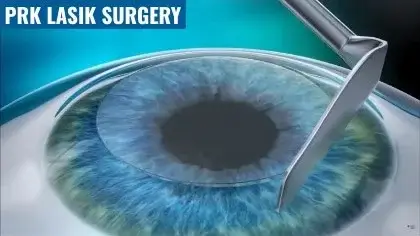
1. Epithelium is removed with Alcohol Delamination
2. Laser reshapes the corneal surface.
3. A bandage contact lens is applied to protect the eye as it heals.
| Pros | Cons |
|---|---|
| No flap complications | Longer healing |
| Suitable for thin corneas | More discomfort in the first few days |
| Long-lasting results |
TransPRK is PRK’s futuristic cousin. It’s a no-touch, one-step laser procedure. The laser removes the epithelium and reshapes your cornea in one go- no scratch, no tools, no manual contact.
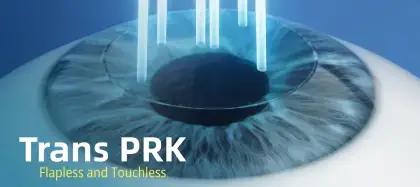
With TransPRK, the laser does it all —safely and precisely. That means:
Expect:
SmartSurf is like the Tesla of laser eye surgeries. It’s the latest version of TransPRK that uses Smart Pulse Technology to deliver ultra-smooth results and accelerated healing. It maps 1,00,000 points for removing all the aberrations (irregularities) on the cornea for better night vision and contrast.
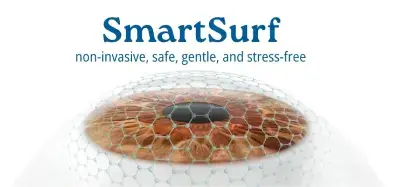
This tech makes the corneal surface smoother, which:
With SmartSurf, most patients see significant improvement with in 4-5 days, and full recovery happens faster than traditional PRK.
NO CUTS. NO INSTRUMENTS. JUST LASER.
That’s why SmartSurf is often marketed as the most comfortable way to correct your vision.
| Parameter | PRK | TransPRK | SmartSurf | Wavelight Plus Innoveyes |
|---|---|---|---|---|
| Pain & Discomfort | More discomfort during recovery | Mild discomfort | Very minimal discomfort | Still evolving – pain levels may vary |
| Touchless Procedure | ❌ Manual epithelial removal | ✅ 100% no-touch | ✅ Fully touch-free and blade-free | ✅ Touch-free, but lacks proven comfort |
| Healing Time | 7 days | 4–5 days | 3–4 days (faster recovery) | 4–6 days (limited data available) |
| Vision Outcome (Long-Term) | Good | Excellent | Excellent with better clarity | Expected to be good, but not widely proven |
| Technology | Basic | Trusted & Advanced | Most advanced laser tech | New launch, still gaining clinical trust |
| Safety (No Flap) | ✅ Safer | ✅ Very safe | ✅ Extremely safe (no contact involved) | ✅ Safe, but long-term safety under review |
| Customization | Low | Medium | High precision with smart mapping | Claims customization – results pending |
| Dry Eye Risk | Reduced | Low | Very Low | Data not fully available yet |
| Success Rate (20/20 or better) | 98% | 99% | 100% | No solid long-term success data |
| Pain & Discomfort | More discomfort during recovery | Mild discomfort | Very minimal discomfort | Still evolving – pain levels may vary |
| Myth | Fact |
|---|---|
| TransPRK and Wavelight Plus Innoveyes are the same | ❌ Not true. TransPRK is a tested, globally trusted method. Wavelight Plus Innoveyes is newer and still gaining clinical reliability. |
| SmartSurf is just marketing | ❌ Incorrect. SmartSurf combines the benefits of TransPRK with enhanced precision and comfort – it’s one of the most advanced options today. |
| Wavelight Plus gives better results | ❌ No current evidence supports superior results compared to SmartSurf or TransPRK. |
| Procedure | Average Cost (INR) |
|---|---|
| PRK | ₹60,000 |
| TransPRK | ₹60,000 |
| SmartSurf | ₹75,000 |
| Wavelight Plus Innoveyes | ₹1,50,000 and more |
✅ SmartSurf and TransPRK stand out as the most reliable and comfortable options - offering excellent vision results, faster recovery, and long-term safety backed by clinical results.
⚠️ Wavelight Plus Innoveyes is promising but still new and unproven in real-world patient outcomes.
Insurance and Financing Options
Most insurance plans don’t cover these, but you can avail NO COST EMI.
Factors to Consider
Doctor’s Recommendations
Always consult with a qualified refractive surgeon. They’ll map your cornea and suggest what fits you best.
From not seeing the alarm clock to waking up with perfect vision—life after surgery feels like a miracle for most patients.

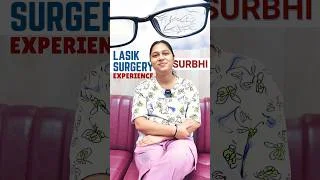


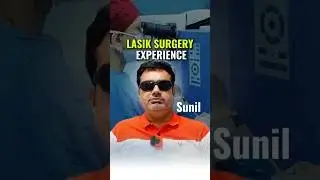
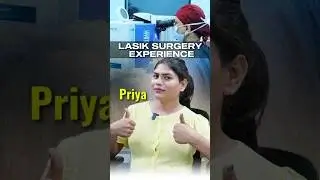
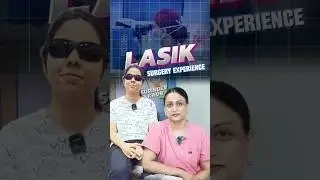

What to Expect After Surgery
Tips for Faster Healing

PRK removes the outer layer of the cornea without creating a flap, making it ideal for thin corneas. LASIK creates a flap for quicker recovery but isn't suitable for everyone.
Most patients report only mild discomfort during the first few days. Numbing drops and bandage contact lenses help minimize pain.
Initial healing typically takes 3–5 days. Visual clarity improves over a few weeks, with full results in about a month.
Yes, Trans PRK is often safer for people with active lifestyles or thin corneas because there's no flap to dislodge or injure.
Absolutely. TransPRK is often preferred for dry eye patients as it causes less nerve disruption than LASIK.
Yes, vision correction from SmartSurf and other flapless techniques is long-lasting, similar to LASIK.
People with thin corneas, irregular corneal surfaces, or a risk of eye trauma may be better candidates for flapless options.
The cost varies by hospital and location. Some flapless options may be slightly more expensive due to advanced technology, but they offer long-term value. At Save Sight Centre, Flapless surgery starts at just Rs. 60,000/-
Yes, but you should avoid strenuous activity for about a week. Since there's no flap, the risk of dislodging it is eliminated.
SmartSurf is considered one of the most advanced, offering precise results with minimal discomfort and no flap-related complications.
Copyright © 2025 | Save Sight Centre | All Rights Reserved.